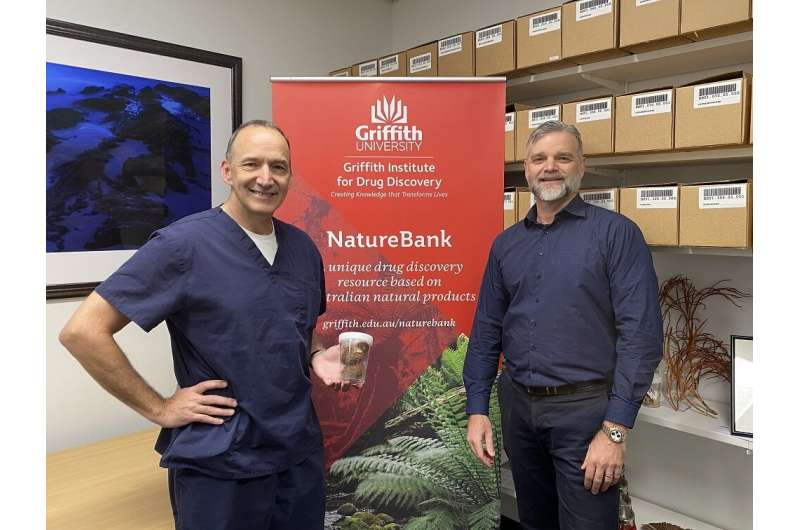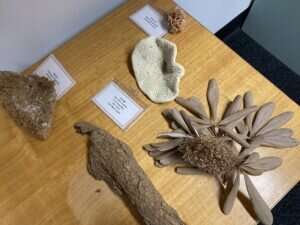This article has been reviewed according to Science X's editorial process and policies. Editors have highlighted the following attributes while ensuring the content's credibility:
fact-checked
trusted source
proofread
Rainforest plant could hold key to lung fibrosis treatment

Researchers from Griffith University's NatureBank and Metro North Health in Brisbane have found a natural product derived from a Queensland rainforest tree that may hold the key to treating and reversing life-threatening lung diseases, including silicosis.
Pulmonary or lung fibrosis is a condition that causes severe breathlessness that progressively worsens over time and affects more than 3 million people globally, with average survival after diagnosis between two to five years.
NatureBank Manager and Griffith Institute for Drug Discovery (GRIDD) Research Leader Associate Professor Rohan Davis said NatureBank accelerated biodiscovery by providing researchers from around the world with access to unique Australian-derived natural compounds with high potential for development into new drugs.
"Through NatureBank, we were able to provide the Metro North Health research team with a number of natural compounds that could be tested for their potential use in treating lung fibrosis," Associate Professor Davis said.
"Already one of the compounds isolated and supplied by NatureBank from the roots of a rainforest tree native to Queensland has us excited about what this could mean for patients."

Metro North Health Director of Research and Lung Transplant Specialist Professor Dan Chambers said there was currently no cure for lung fibrosis but a huge demand among the patients he saw at the Queensland Lung Transplant Service. The search for answers led him to NatureBank at GRIDD.
"Our team wanted to better understand the behavior and characteristics of cells that drive fibrosis in sufferers of the disease, with the aim to discover new, more effective, treatments," Professor Chambers said.
"We are thrilled with this discovery, with a natural compound found in a North Queensland rainforest tree showing particular promise."
Professor Chambers and his team at The Prince Charles Hospital pioneered whole lung lavage, a specialized procedure which washes out the lung of silicosis patients, but they knew that a lung washout would not help those with more advanced disease. Importantly, instead of disposing of the lavage fluid and trillions of abnormal cells, they developed a world first drug development pipeline.
"We needed to find a way to discover completely new drugs, especially for those who can't benefit from the lung lavage, which is where we can combine our existing research on silicosis, the cells from the whole lung lavage and compounds from nature to find answers," Professor Chambers said.
Stonemason and father Scott Newall is excited at the prospect of research in this space, having been diagnosed with progressive massive fibrosis around five years ago, which changed his life forever.
"Being diagnosed was a shock to the system, it affected my whole family. I had to stop work which was something I loved," Mr. Newall said.
"I hope that one day there might be a cure for my condition, so I can stay around and watch my three kids grow up—they are my world."
The initial results will be soon published, with hope for a clinical research trial to take place at a later stage.





















